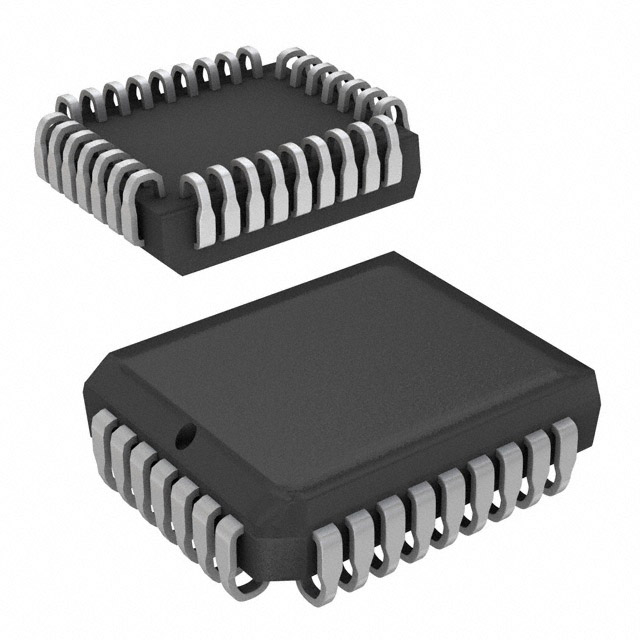Xem thông số kỹ thuật để biết chi tiết sản phẩm.

AT28C64X-15JI
Product Overview
Category
AT28C64X-15JI belongs to the category of non-volatile memory devices.
Use
This product is primarily used for storing and retrieving digital information in electronic systems.
Characteristics
- Non-volatile: The stored data remains intact even when power is removed.
- High capacity: The AT28C64X-15JI has a storage capacity of 64 kilobits (8 kilobytes).
- Fast access time: It operates at a speed of 150 nanoseconds.
- Low power consumption: The device is designed to minimize power usage.
- Reliable: It offers high endurance and data retention capabilities.
- Easy integration: The package and pin configuration facilitate seamless integration into various electronic systems.
Package
The AT28C64X-15JI is available in a standard JEDEC 32-pin PLCC (Plastic Leaded Chip Carrier) package.
Essence
The essence of this product lies in its ability to provide non-volatile memory storage with high capacity, fast access time, and low power consumption.
Packaging/Quantity
The AT28C64X-15JI is typically packaged in reels or tubes, with each containing a specific quantity of devices. The exact packaging and quantity may vary depending on the manufacturer and supplier.
Specifications
- Memory Capacity: 64 kilobits (8 kilobytes)
- Access Time: 150 nanoseconds
- Supply Voltage: 5V
- Operating Temperature Range: -40°C to +85°C
- Data Retention: 10 years
- Endurance: 10,000 write cycles
Detailed Pin Configuration
The AT28C64X-15JI has a total of 32 pins, which are assigned specific functions as follows:
- A0-A12: Address Inputs
- CE: Chip Enable
- OE: Output Enable
- WE: Write Enable
- I/O0-I/O7: Data Input/Output
- VCC: Supply Voltage
- GND: Ground
Functional Features
- Random Access: The AT28C64X-15JI allows random access to any memory location, enabling efficient data retrieval.
- Byte-Writable: It supports byte-level write operations, allowing selective modification of data.
- Hardware and Software Data Protection: The device incorporates mechanisms to protect stored data from accidental modifications.
- High-Speed Operation: With a fast access time of 150 nanoseconds, it ensures quick data retrieval.
Advantages and Disadvantages
Advantages
- Non-volatile memory ensures data retention even during power loss.
- High storage capacity for various applications.
- Low power consumption extends battery life in portable devices.
- Fast access time enables quick data retrieval.
- Reliable and durable design ensures long-term usage.
Disadvantages
- Limited write endurance compared to other memory technologies.
- Higher cost per bit compared to volatile memory options.
- Requires additional circuitry for programming and erasing operations.
Working Principles
The AT28C64X-15JI utilizes electrically erasable programmable read-only memory (EEPROM) technology. It stores data using floating-gate transistors that can retain charge even when power is removed. The device can be written to or read from by applying appropriate voltage levels to the control pins.
Detailed Application Field Plans
The AT28C64X-15JI finds application in various electronic systems, including but not limited to: - Microcontrollers - Embedded systems - Industrial automation - Automotive electronics - Communication devices
Detailed and Complete Alternative Models
- AT28C64B-15JI: Similar specifications with minor differences in package type.
- AT28C64D-15JI: Higher endurance and extended temperature range.
- AT28C256X-15JI: Increased storage capacity of 256 kilobits (32 kilobytes).
These alternative models offer similar functionality and can be considered based on specific requirements.
In conclusion, the AT28C64X-15JI is a non-volatile memory device with high capacity, fast access time, and low power consumption. It finds application in various electronic systems and offers advantages such as data retention, reliability, and ease of integration. However, it has limitations in terms of write endurance and cost per bit. Alternative models with different specifications are available to cater to diverse needs.
Liệt kê 10 câu hỏi và câu trả lời thường gặp liên quan đến ứng dụng AT28C64X-15JI trong giải pháp kỹ thuật
Sure! Here are 10 common questions and answers related to the application of AT28C64X-15JI in technical solutions:
Q: What is the AT28C64X-15JI? A: The AT28C64X-15JI is a high-performance, low-power CMOS 64K EEPROM (Electrically Erasable Programmable Read-Only Memory) integrated circuit.
Q: What is the operating voltage range for the AT28C64X-15JI? A: The operating voltage range for the AT28C64X-15JI is typically between 4.5V and 5.5V.
Q: What is the maximum clock frequency supported by the AT28C64X-15JI? A: The AT28C64X-15JI supports a maximum clock frequency of 150 ns.
Q: Can the AT28C64X-15JI be used for storing program code or data? A: Yes, the AT28C64X-15JI can be used for storing both program code and data.
Q: How many bytes of data can the AT28C64X-15JI store? A: The AT28C64X-15JI can store up to 64 kilobytes (64K) of data.
Q: Is the AT28C64X-15JI erasable and reprogrammable? A: Yes, the AT28C64X-15JI is electrically erasable and reprogrammable.
Q: What is the typical endurance of the AT28C64X-15JI? A: The AT28C64X-15JI has a typical endurance of 100,000 erase/write cycles.
Q: Does the AT28C64X-15JI require any external power supply or voltage regulator? A: No, the AT28C64X-15JI does not require any external power supply or voltage regulator. It operates directly from the system's power supply.
Q: Can the AT28C64X-15JI operate in harsh environmental conditions? A: Yes, the AT28C64X-15JI is designed to operate in a wide temperature range (-40°C to +85°C) and is suitable for various industrial applications.
Q: What are some typical applications of the AT28C64X-15JI? A: The AT28C64X-15JI is commonly used in microcontroller-based systems, embedded systems, automotive electronics, telecommunications equipment, and other applications that require non-volatile memory storage.
Please note that these answers are general and may vary depending on specific requirements and use cases.

